As part of our Great Brick Safari show, the spider diorama is a must-see model, full of ingenious LEGO building techniques and layers of detail that emerge from every angle.
You can imagine the conversations as families gather around the spider diorama and attempt to out-do each other by spotting more. The beauty of this scene (perhaps in contrast to the butterfly diorama that also forms part of the show), is that the spiders are hiding; you’ll need to explore every side at various heights to find them all.
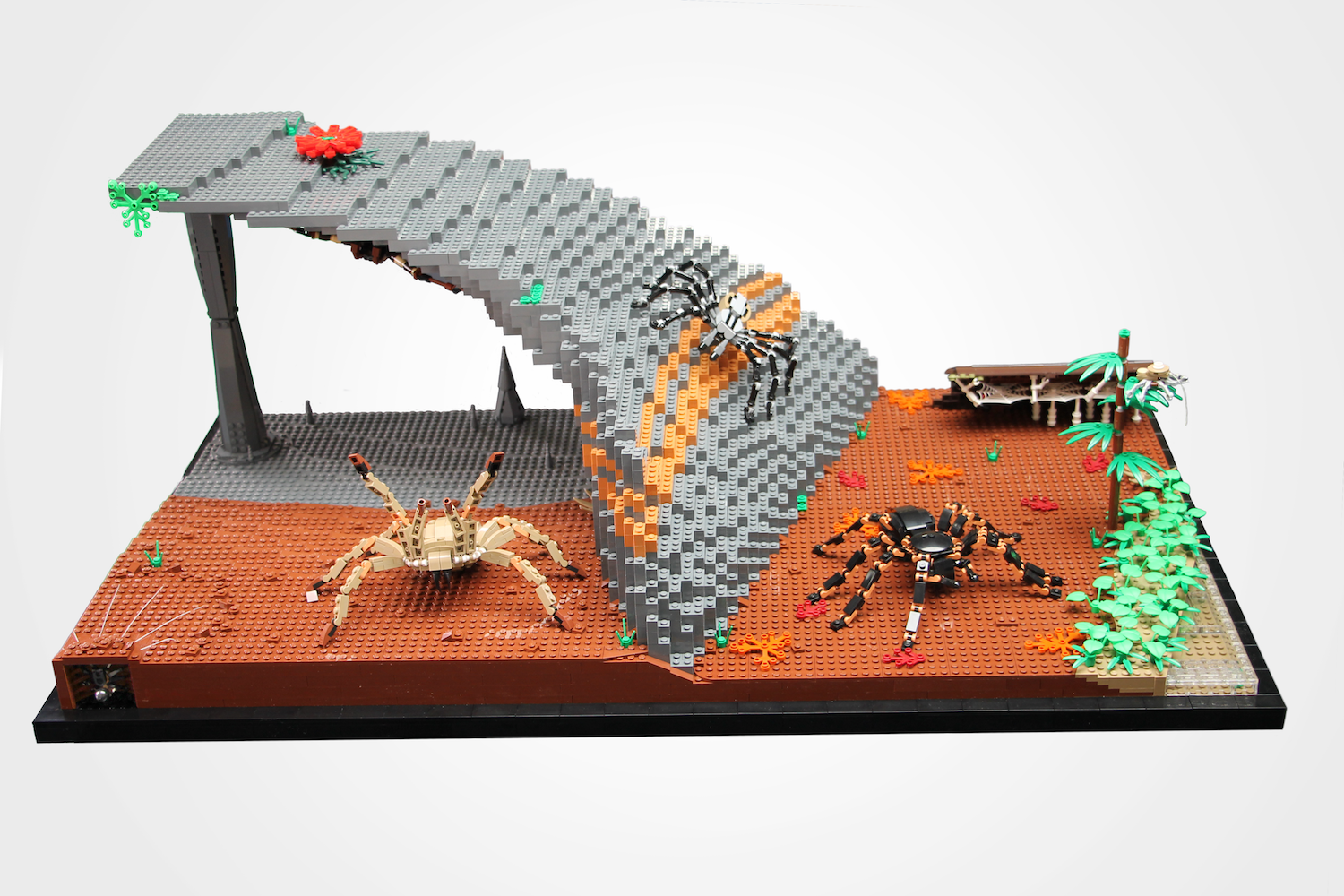


It took professional builder Stephen Juby seven days to complete the entire diorama; three days on the spiders, and just a little longer than that to construct the terrain. The spiders featured are a diverse collection.
- The Brazilian salmon pink bird eater is the central black spider, a key focal point of the diorama.
- The dark tan arachnid is a Goliath bird-eating tarantula.
- A Huntsman spider, hanging upside down under the cavern wall.
- On the edge of the diorama is a bark spider,which has the longest web-shooting range of any spider.
- Under the edge of the diorama is a trapdoor spider, preparing its namesake trap.
- Barely visible but highly detailed is a western black widow.
The terrain itself is, in his own words, one of the diorama’s most unusual features, but we think it’s also one of the most distinctive.
“I had to build up quite high in order to get the height to put the burrowing spider underground. I had good fun with the stalagmites and stalactites. The larger one was necessary in order to support the cave, but to make it look a little less barren in there, I made various smaller ones using cone pieces.”
In fact, you can see several of the conical stalactites are extended by minifigure drill pieces, one of Stephen’s many creative uses for seemingly bespoke, sole-purpose pieces.
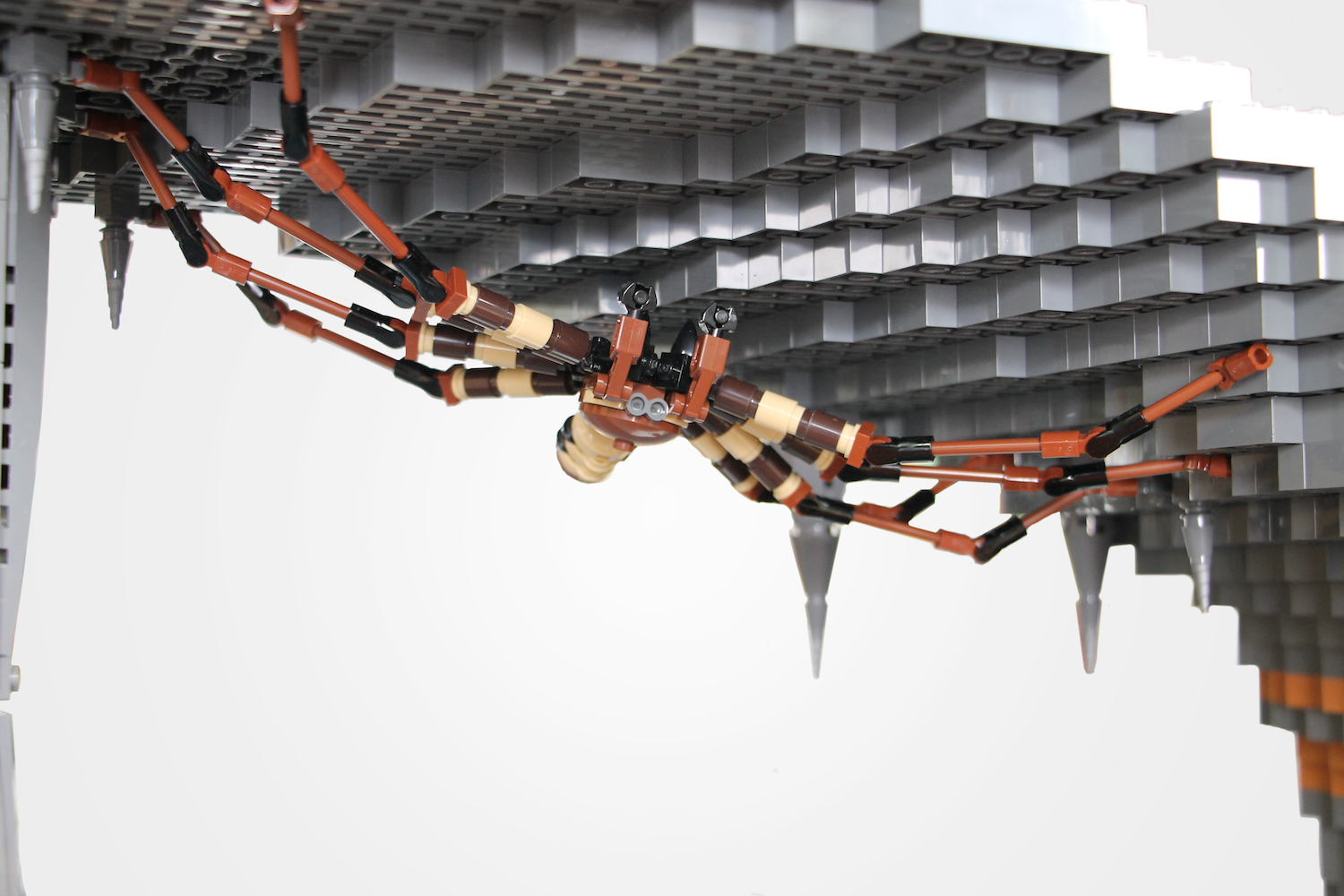

“In order to make it look as good as possible, you want to get about the same level of poseability as the real spider.”
“In recent years, LEGO have released a lot of small hinge pieces which certainly made the building of spiders and insects an awful lot easier”, he explains, pointing in particular to the heavily-articulated Brazilian bird-eater. The black-bodied tarantula’s joints are largely built from flesh 1×1 handle plate, and the sheer amount of articulation that they offer is key to bringing this and the other models to life. The same pieces in white are visible in the other spiders, connecting the spindly legs to their bodies. This hinge’s curved back means it can be attached at an again, increasing the spiders’ naturalistic articulation even further.
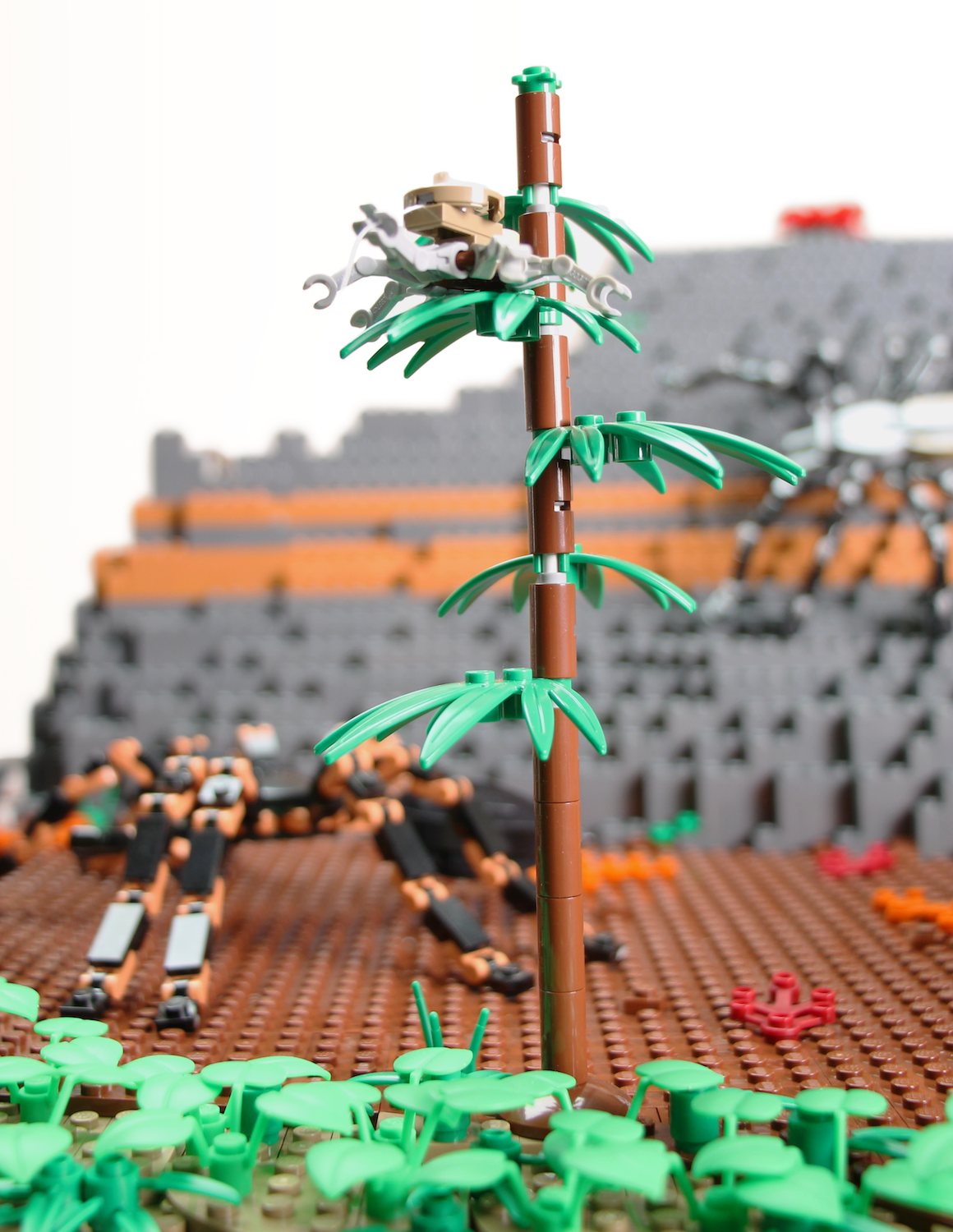

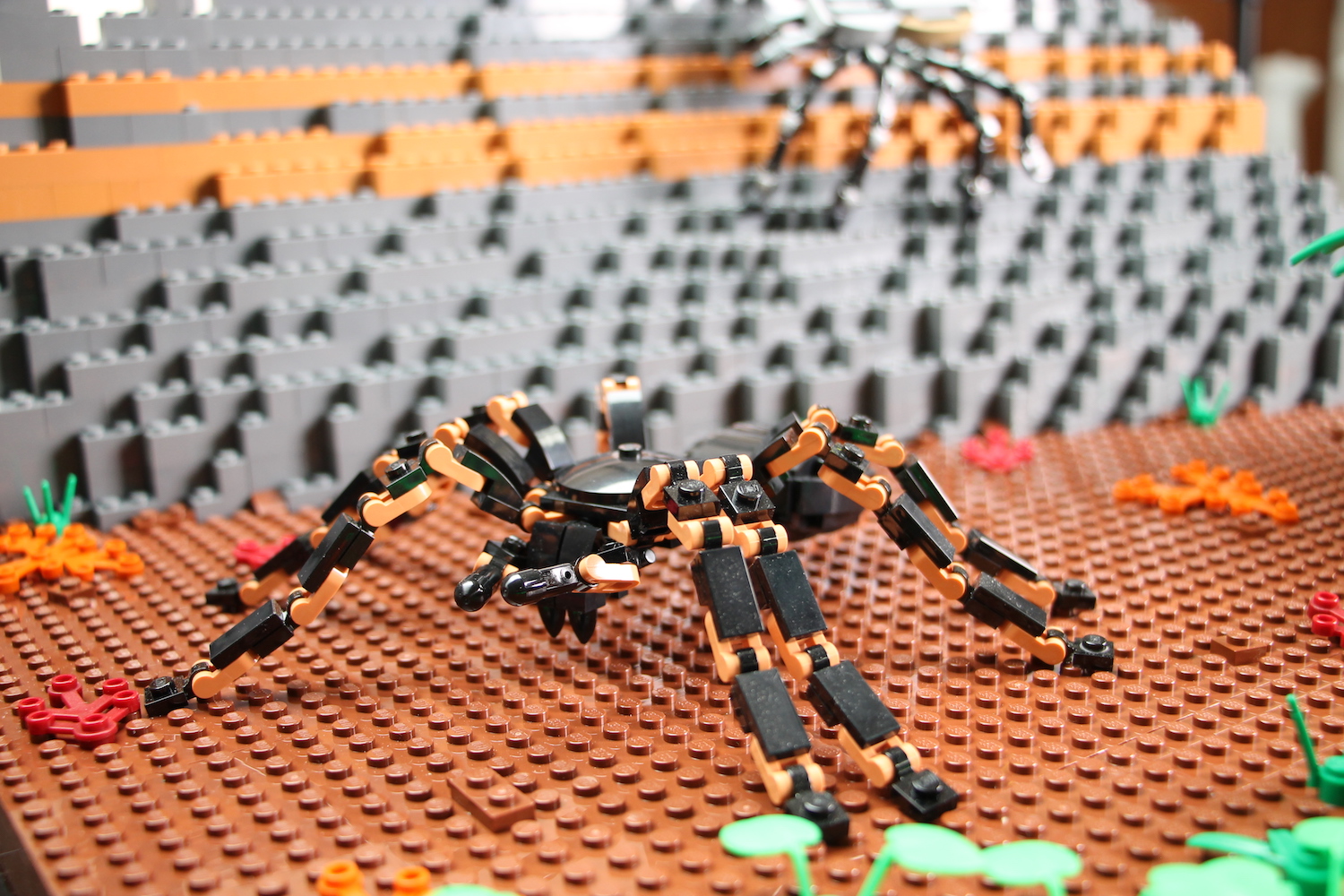
“In order to make it look as good as possible, you want to get about the same level of poseability as the real spider, rather than just having to build it in a set pose. You can get the minute angles in their legs, which makes it look a lot more realistic.” And the results speak for themselves. Crawling over a little slice of their miniature world, these spiders could be easily mistaken for the real thing.
Words and photos by Bright Bricks.

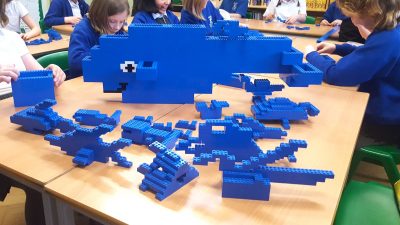
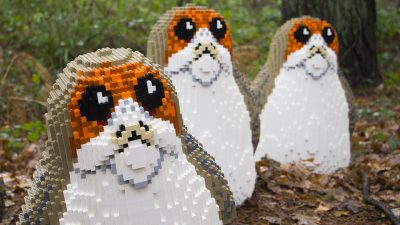
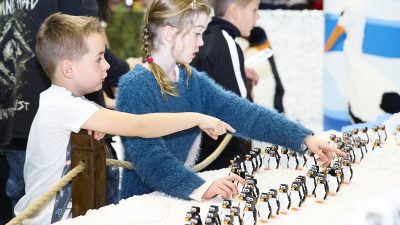
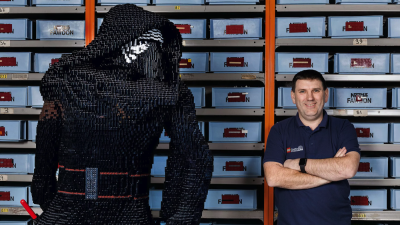
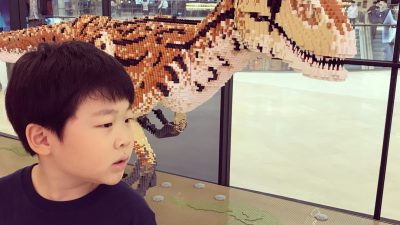
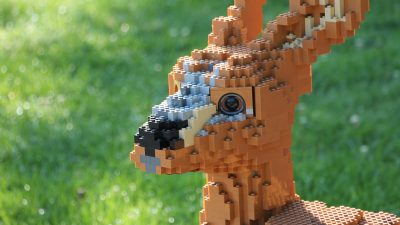
Comments